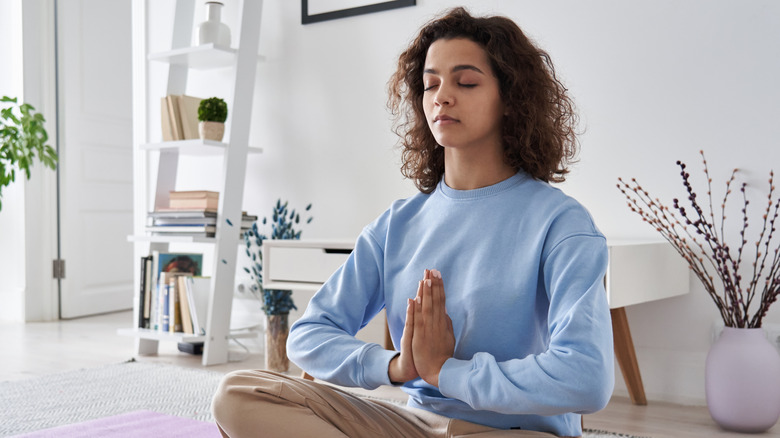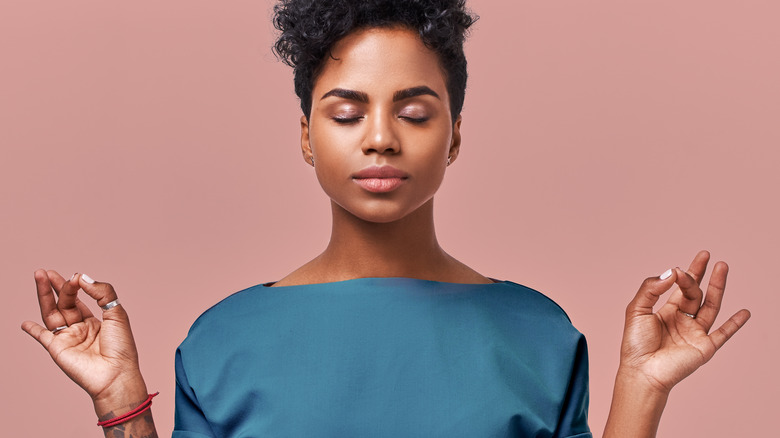What Is Ujjayi Breathing And How Can It Benefit You?
You're probably familiar with that iconic, ominous breath of Darth Vader. You might not know that this type of breathing — ujjayi — can benefit your health. No, you don't need a dark mask or a lightsaber. You just need to direct your attention to your breath.
According to yoga teacher Autumn Mist, you produce the whispering sound in ujjayi breath by slightly constricting your throat (via North Carolina State University). Try whispering "he" on the inhale and then whispering "ha" on the exhale, like you're fogging up a mirror. After you get the hang of it, exhale with your mouth closed, while still making a "ha" sound. Keeping the throat slightly constricted, try inhaling the same way, making a "he" sound with your mouth closed. Practice for a few moments, keeping the duration of the inhale the same as your exhale.
Although ujjayi breath can be used as a stand-alone breathwork practice, vinyasa yoga practitioners use this breath to help warm the body while moving through various yoga poses (per MindBodyGreen). It also can help anchor you in a yoga or meditation practice because it gives you a steady, calming sound on which to focus.
The benefits of ujjayi breathing
Even without an accompanying physical yoga practice, ujjayi breath can help you mentally and physically. According to a 2022 study in the Journal of Clinical and Diagnostic Research, students who practiced eight minutes of ujjayi breath improved their attention and lowered their anxiety levels.
Practicing ujjayi breath for longer can improve your cardiovascular system. In a 2017 study in the National Journal of Physiology, Pharmacy and Pharmacology, 60 young adults practiced ujjayi for 10 minutes twice a day for three months. At the end of the study, the participants had lower physiological responses to stress and reduced blood pressure, pulse, and respiratory rate.
Other research studies have found ujjayi breath to be somewhat beneficial. A 2013 study in Evidence-Based Complementary and Alternative Medicine tested various rates of breathing, such as breathing 12 breaths per minute versus six. Although this study found ujjayi reduced blood pressure, the researchers suggested that slower breathing without constricting the throat was best for blood pressure, at least for beginners. Because ujjayi breathing involves more effort, the researchers did not recommend ujjayi breathing for those new to yoga. Instead, they endorsed breathing at a rate of six breaths per minute with equal inhales and exhales for improving heart health.


